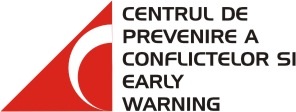The conclusion of the first ballot for electing the President of Romania and the Parliament was by no means spectacular, just as the campaign itself was not particularly exciting, both on account of the Central Electoral Bureau (BEC), and of the National Broadcasting Monitoring Authority (CNA). And we have had no spectacular outcome not because the final results were not interesting, but because the outcome reflected, to a substantial extent, the voters’ increasing lack of interest in the political life. The turnout was mediocre, inertia-driven, with Romanian citizens proving that at least from this point of view they are prepared for a Europe- in which bureaucracy and personal comfort are more important than politicians lacking in strength.
The turnover, put at little over 60 per cent of the Romanians entitled to voting, was one of the lowest in the past few years, showcasing both the voters’ passive attitude, and the fact that political parties were unable to stimulate the society’s interest in politics. And this comes precisely at a time when Romania is facing the most important political, social and economic challenge in its contemporary history, namely integration to the European Union. Although this objective was used by all political parties in the electoral campaign, it was presented as if in an attempt to meet an obligation, rather than as the essential stepping stone in the political communication and propaganda. Without such a purpose, the campaign was turned into a lengthy and boring beating-about-the-bushes, in which neither political parties nor citizens had anything to gain, and very likely media producers got quite bored with as well.
Winner of the first ballot
This boredom came in quite handy to the ruling party, which probably had arranged the system so as to carry this apathy on and further fuel it, with the obvious purpose of generating the image of that peace that President Ion Iliescu has been invoking ever since the first years of Romanian democracy. Using this as the starting point, the PSD+PUR National Union built the image of a sound Government, which plans to work hard for the citizens, on the basis of a well defined and duly implemented programme, and this strategy was quite successful.
PSD’ electoral campaign was undoubtedly very well designed, for many reasons, two of which are worth mentioning. First of all, through the alliance with the National Humanist Party (PUR), PSD managed to win over the last national-impact TV station, leaving the difficult task of conveying the Opposition’s messages on the shoulders of two or three smaller stations. Thus, for most citizens, in particular for those in rural communities, whose main source of information is the television, opportunities to hear and understand correctly the message of the Opposition were drastically reduced. Which is not to mean that the remaining TV stations did not try to reach the viewers, but their attempts were obviously hindered by the diabolic self-censorship system imposed by BEC and CNA, which did not allow them to exceed their coverage and technical restrictions.
Thus, the PSD+PUR Union achieved an outstanding performance, that of escaping accusations referring to pressure on information media, and at the same time of conveying direct and effective signals to the voters – which the Opposition couldn’t always do. Moreover, the fact that face-to-face debates of the party’s main image carriers, i.e. the presidential candidates, were hosted by TV stations acknowledged as being subdued to the ruling party, accounted for a ridiculous show format, on the verge of the absurd. The marathon on TVR 1, at least, was utterly abnormal, both in terms of format – meaning the sets of questions – and in terms of diluting the candidates’ electoral messages in the huge amount of empty words imposed by producers.
Adopting McLuhan’s classical theory that the medium creates the message, the ruling party was able to build its campaign on the economic and political achievements of the past few years, not directly, but through the media, and through television in particular. I believe I can safely say that even commercials were indirectly pleading PSD’s case, given that a range of Romanians’ material myths came true (whisky on shelves, good, cheap cars, the possibility to travel in the West any time, electronics and home appliance purchased on credit just on the basis of the ID card), although they were not very likely to be reached, four years ago. And PSD managed to introduce all this commercial mythology in its portfolio of achievements, through the “economic growth” concept.
Obviously, many of these economic achievements would have been accomplished under any free market circumstances, by virtue of an inescapable economic order. But the PSD+PUR Union’s advantage was that these changes occurred during the Nastase Government’s term in office. And Nastase, thanks to a very good campaign team, was able to turn them into his personal merit. The same campaign designers also changed the Premier’s image, turning him from the arrogant character he was perceived as one year ago into a calm and warm guy, different from Ion Iliescu, but human: a man who can stutter with emotion, who suggests he is able to play guitar, live on TV (he isn’t), one who likes Wagner, but also Compact rock band.
The change was well received, in particular since personal data have had their impact in the campaign, vaguely conducted in line with European practices. A tall, smiling individual, apparently educated (speaking foreign languages), former Minister of Foreign Affairs, will be better received by Europe, voters told themselves, than a former Minister of Transportation, originally a rude sailor going from one blunder to another. And Adrian Năstase benefited in this campaign from the contribution of first-rate international politicians such as Bush, Berlusconi or Tony Blair.
For this reason, any one who analysed these data could forecast that the PSD+PUR Union had more chances to win the elections, even by a larger margin. On one condition: to take the civil society out of the equation. Because during this electoral campaign, the civil society was undoubtedly the true opposition to PSD, once again revealing the corrupt and outdated face of the ruling party. A large share of first-rate printed media and civil society were the scaffolding on which D.A. Alliance built its campaign message. But unfortunately it was only used for obtaining the negative vote.
The last will come out first…
Built as a fierce reaction against PSD, the Alliance ‘s campaign was a mediocre one, given that the Opposition lacked a true opportunity of having a direct dialogue with the Power. Whereas in 2000 the Opposition at that time, the current Power, capitalised on the weakness and financial fear of the media system, in 2004, after learning their lesson in the local elections, the Power no longer allowed for different views in the media institutions it was controlling. Therefore the Opposition’s reaction could only be heard via the civil society or through secondary image carriers offered unfavourable airtime in the day (in the morning, when people are at work) or in the night (late at night).
Without a coherent programme and a credible Governmental team, the D.A. Alliance relied on its traditional voters, i.e. those who would under no circumstances vote for PSD or similar formulas. And they cast their votes, proving once again that their number is not large enough. Because in exit-poll estimates the Alliance did not get more than the total number of votes the two member parties would have got before becoming allies. In other words, unlike in the local elections, Alliance member parties found no other supporters except for their own electoral pools. Many of those who voted for D.A. Alliance now, apart from the traditional voters, are in fact those who in 2000, out of despair or disgust, voted for the Greater Romania Party (PRM). There can be no others, considering that the young didn’t come to polling stations in spectacular numbers, and it was the young that the Alliance expected to bring about the change.
For this reason, we might hardly say that the Alliance , as an entity, had an electoral campaign. And this is because it made the mistake of throwing the entire campaign on the main image carrier (the political driving force) – Traian Basescu. Replacing Theodor Stolojan in the middle of the race appeared in a first stage to be a vote-winning move, but it proved to be an error, as most of the public perceived it – quite correctly in a way – as the political lynching of an innocent for the base goal of attracting even more negative votes. The idea that Băsescu is a charismatic character who can actually change things appeared to many as a well targeted blow against PSD, whose enemy Basescu admitted to being. But one fact was overlooked: that Băsescu entered this competition already tired, after a difficult local campaign, and Ciorbea’s image did not fade away from the memory of Romanians, and Bucharesters in particular.
Stepping in right in the middle of the campaign, Băsescu did cope with it quite honourably, considering that he used the entire team he had worked with in the local elections, although the two campaigns do not have the same symbolic value, nor the same type of electorate. Moreover, unlike in the local electoral campaign, Băsescu didn’t benefit from a direct debate with his main opponent, Adrian Năstase, who would not strain too much before the great confrontation in the runoff.
Publicat în : English de la numărul 21









